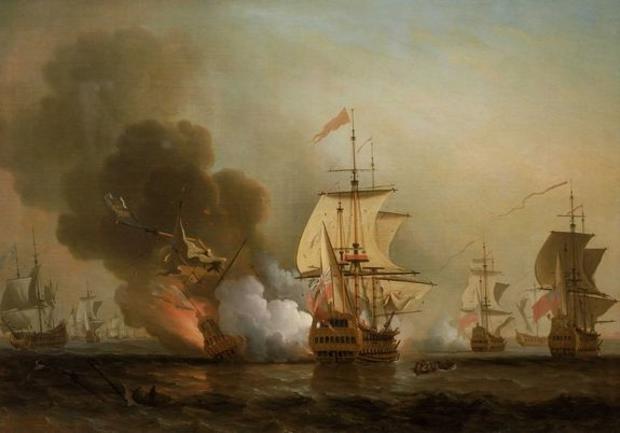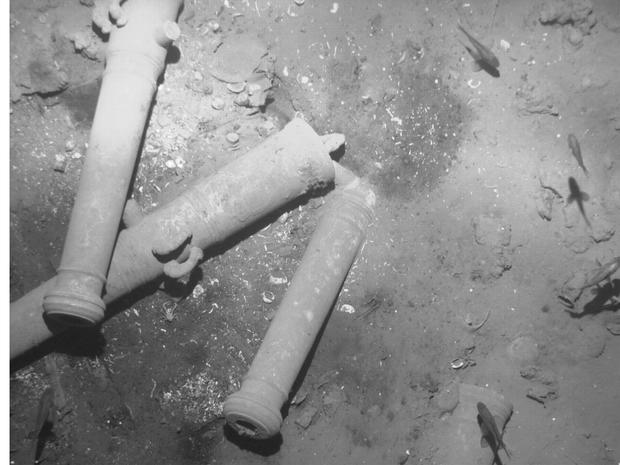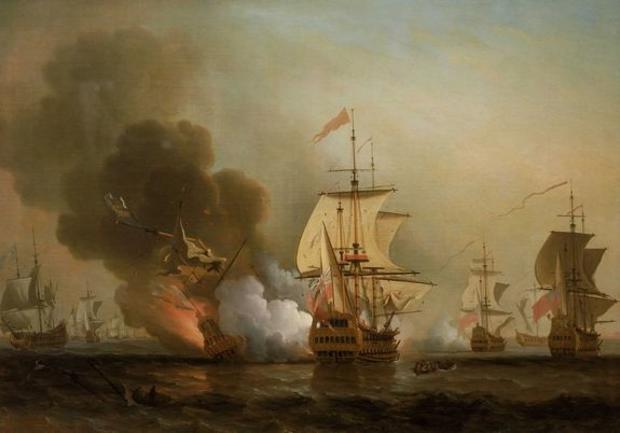New video shows gold coins and other treasure scattered around a long-lost shipwreck off the coast of Colombia — as well as two other historical shipwrecks nearby, officials said Monday. Maritime experts consider the wreck of the San Jose to be the “holy grail” of Spanish colonial shipwrecks.
President Ivan Duque and naval officials said on Monday that a remotely operated vehicle reached 900 meters below the surface of the ocean, showing new images of the wreckage.
La Armada Nacional reveló precisas imágenes de video en alta definición del Galeón San José
Queremos compartir que, gracias a los equipos tecnológicos y las labores de nuestra Armada de Colombia, pudimos llegar a un nivel de precisión, nunca antes visto, del Galeón San José, manteniendo intacto y protegiendo, de cara a una posterior extracción, este patrimonio de la humanidad 🇨🇴
Posted by Iván Duque on Monday, June 6, 2022
The video shows the best-yet view of the treasure that was aboard the San Jose — including gold ingots and coins, cannons made in Seville in 1655 and an intact Chinese dinner service, Reuters reported.
The news agency reported the remotely operated vehicle also discovered two other shipwrecks in the area, including a schooner thought to be from about two centuries ago.
“We now have two other discoveries in the same area, that show other options for archaeological exploration,” navy commander Admiral Gabriel Perez said, according to Reuters.
Colombia was a colony of Spain when the San Jose was sunk in 1708, and gold from across South America, especially modern-day Peru and Bolivia, was stored in the fort of its coastal city, Cartagena, before being shipped back to Europe.
The Colombian government considers it a “national treasure” and wants it to be displayed in a future museum to be built in Cartagena.

Samuel Scott
According to a presidential decree released earlier this year, companies or individuals interested in excavating the ship will have to sign a “contract” with the state and submit a detailed inventory of their finds to the government as well as plans for handling the goods.
The uber-loot, which experts estimate to include at least 200 tons of gold, silver and emeralds, will be a point of pride for Colombia, Vice President and top diplomat Marta Lucia Ramirez said in a statement. The treasure could be worth billions of dollars if ever recovered.
“The sums of wealth are invaluable, and the responsibility of the protégés has already been extracted, contributing to the history of Colombia, the Caribbean and the world,” she said.
Long the daydream of treasure hunters worldwide, the San Jose galleon was sunk by the British Navy on the night of June 7, 1708, off Cartagena de Indias.
The San Jose was at the time carrying gold, silver and precious stones which were to be delivered from the Spanish colonies in Latin America to the court of King Philip V.
Only a few of the San Jose’s 600-member crew survived the wreck.
“It makes it very touchy because one is not supposed to intervene in war graves,” Justin Leidwanger, an archaeologist at Stanford University who studies ancient shipwrecks, told Live Science in 2015. “Can you pluck treasure off the seabed without disturbing a war grave? I doubt you can. But these are the sort of discussions that will be had.”
At the end of 2015, then-Colombian President Juan Manuel Santos announced the discovery of the exact location of the wreck, which was confirmed by the ship’s unique bronze cannons with dolphin engravings.
Colombia has said it will cost about $70 million to carry out a full salvage operation on the wreckage, which is at a depth of between 2,000 and 3,200 feet.
Spain says the wreck is its own, as a ship of state; and an indigenous group in Bolivia, the Qhara Qhara, says the treasure belongs to them, since their ancestors were forced to mine it from what was in the 1500s the world’s largest silver mine.

REUTERS/Colombian Ministry of Culture/Handout via Reuters
- In:
- Shipwreck
- Colombia
